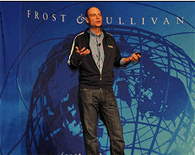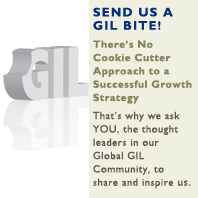 |
|
October 2010 | Vol. 3 Issue 10 |
 |
CONNECT |
 |
 |
 |
|
|
 
FEATURED ARTICLE
Can Innovation Change Preconceptions?
 |
|
Electric cars face something of an image problem. Forget the admirable environmental benefits, the concern for most people has traditionally been the sluggish acceleration, disappointing top speeds and the nagging fear that you’ll be left stranded on the hard shoulder when the battery fails – probably, given the limited range of previous electric vehicles (or EVs), after just a few miles. And then of course there’s the cost; going green certainly doesn’t come cheap.
Automaker Nissan says these are outdated misconceptions that couldn’t be further from the truth – and is backing its new Leaf midsize compact, the world’s first mass-produced electric car, to prove its point. The Leaf boasts a 100-mile range off a single eight-hour charge (a fast charge takes less than 30 minutes and replenishes the battery to 80 percent of its capacity), a top speed of 90mph and it’s pretty zippy when you pull away at the traffic lights thanks to impressive torque.
“It’s our job to change preconceptions,” says Andy Palmer, Nissan SVP and the man charged with overseeing the company’s global Electric Vehicle (EV) development program. “I can guarantee that if people drive the Leaf many of those preconceptions will disappear – the car is capable of over 90mph so you can definitely lose your license, while in terms of being fun to drive, it’s extraordinary – the handling is amazing.”
Other manufacturers are rapidly following suit, with Ford, GM, Honda and other major car brands – not to mention niche automakers like Tesla – all in the process of developing and releasing their own equivalent to Nissan’s Leaf. Indeed, EVs today are busting myths about performance and winning the praise of car experts around the world. But nonetheless, making the switch to EVs in the first place requires a radical shift in mindset on the consumer’s part. And this is where innovation can play a role.
In a recent article, Mark W. Johnson, Chairman and Co-Founder of innovation consulting and research firm Innosight claims that if companies want to lead the way in green innovation they could do worse than look to the example of Thomas Edison. “The Wizard of Menlo Park didn't invent the light bulb; he invented an industry,” he explains. “He knew the light bulb by itself would have remained merely a curiosity. So, while inventors around the world worked only on the bulb, he conceived an entire network of generators, meters, transmission lines, and substations. Most important, he showed how all those elements could be combined into a profitable business and demonstrated its commercial viability.”
The lesson for makers of electric vehicles is to think big. So how do you run an entire country’s transportation network without oil? When Shai Agassi first posed the question in 2006 – along with his idea for a solution – people called him a dreamer. It’s a moniker the Better Place CEO and founder strongly rejects. Sure he thinks big, but there’s nothing fantastical about Agassi’s grand vision. On the contrary, his plans for the future of world transportation are down-to-earth, utilize currently available technology and, most importantly, have received significant backing from the people who matter most: politicians and investors. If anything, his is a pragmatic approach; not so much a re-invention of the wheel as a re-imagining of how to push it.
His goal? A world populated by cars with zero emissions. Not just better gas mileage, not just reduced emissions: no emissions, full stop. “There are 700 million cars in the world today that are producing 2.8 billion tons of carbon dioxide annually,” he explains, in between meetings on a whistle-stop tour of the US promoting the Better Place business model. “Our global economy cannot produce as much oil as we need to continue to grow the economy, let alone support 300 million more cars, which is what we will add in the next 5-7 years. We are running out of time on both problems. We’re addressing one of the largest challenges of the 21st century.”
Agassi’s model envisions an infrastructure of charging spots and battery switching stations. The charging spots will keep the batteries topped off with power so that they always have 100 miles of driving capacity. They are located where you work, live, shop and dine in parking lots so that an electric car will have the ability to recharge when the software instructs it to top off. For trips longer than 100 miles, battery-switching stations will be available roadside. The driver pulls in, and the depleted battery is quickly replaced with a fresh one, without anyone having to leave the vehicle. The process takes less time than it does to fill a tank of liquid fuel.
“One of the biggest challenges when designing an infrastructure like this is making it work for everyone,” says Agassi. “In order for the electrification of transportation to work on a global level, we need an open, standards-based infrastructure where all electric vehicles, no matter the make or model, will run on the same plug-in. When this is adopted, countries and automobile manufacturers around the world will join in the fight for oil independence.”
Despite its mind-numbing scale, Agassi believes the goal is achievable. For one thing, Better Place already has the capability to build an all-electric car network using proven technology such as lithium ion batteries. And together with partners from around the world – including automakers, battery manufacturers, energy companies and governments – the company is making rapid progress. Israel has declared its commitment to be oil-free by 2020. Denmark has reaffirmed its global environmental leadership by committing to a renewable energy-powered electric car network. Australia signed up too, refuting the suggestion that Agassi’s scheme won’t work on a large scale. And 25 more countries around the world are currently in talks with Better Place about how they can be next.
It proves the need to think big. But it also suggests the need to consider the real-world application of innovation to ensure consumer buy-in. New innovations can change the world for the better; but first you need to change the preconceptions about established ways of doing things so that the shift feels natural. Consumers will always choose the path of least resistance; it’s human nature. So let’s make it easier for them to embrace change.
Ben Thompson has been writing about management issues for the past decade. In his current role as Senior Editor of
Business Management magazine, he leads the editorial direction for one of America’s fastest growing business strategy publications. For more information, please visit:
www.busmanagement.com
|
|
| | |
|
|
|
|
PRIVACY POLICY: We are committed to protecting your right to privacy. © 2010 Frost & Sullivan
This message was sent to you by Frost & Sullivan, 7550 IH 10 W, Ste. 400, San Antonio, TX 78229. If you would prefer not to receive further messages from this sender, please click here or reply to this email and place the word REMOVE in the subject line.
|
|
{OPENEDEMAILMARKER} |
|


















